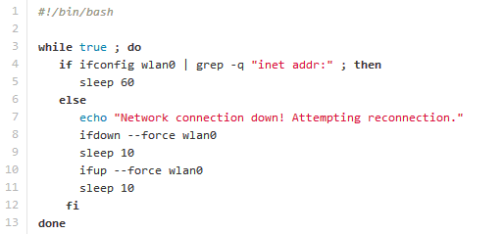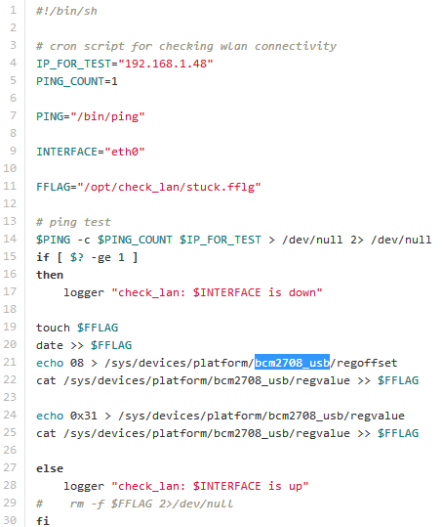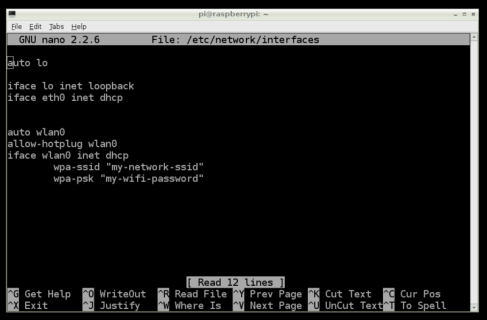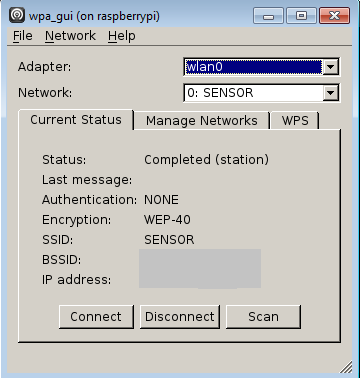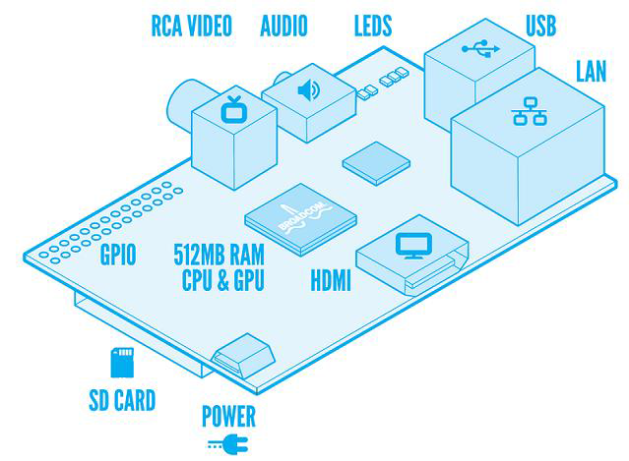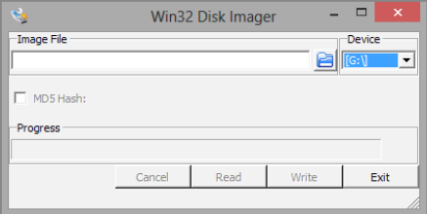Hi Everyone
More work to do! But i also need to write the post i promised. So on Business!
The thing i am writing about today is what freaked me out for many days. Didn’t know what was happening to my r-pi. So that ways its very valuable post which can save lot of your time that i spent tackling these errors. Two main problems were Wi fi + Ethernet drop outs –
Wi fi drop out problem –
One problem that I came across almost first hour I started using raspberry pi was its wi fi connection drops out every now and then and didn’t reconnect automatically until I reboot r-pi or run some command to do it manually( forcing wlan to reconnect). So I wrote a script to do this automatically.
It checks every minute for wireless connection and if I find it down then force it reconnect. See below –
You can also find it here.
Ethernet Driver Problem –
Other problem that freaked me out was – my raspberry pi was freezing every 3 days while running continuously and after reboot it ran 3 more days but then again similar problem. These days I was using wi fi adapter to send data over wi fi network. So I decided to reboot my r-pi every day automatically. But then over Ethernet connection this freeze was happening more frequently (as fast as 4-5 hrs). so I decided to look for this in /var/syslog.
Surprise was – r-pi was not freezing. Heard that? Its USB and other ports were freezing (stopped working). May be that Ethernet problem was hard to tackle for kernel, causing it to freeze! And the technical reason was –
“FIQ interrupt not triggering IRQ interrupt causing USB to dropout”
This comes into play when you run r-pi for longer periods. The problem was “wrong regoffset, value” in –
/sys/devices/platform/bcm2708_usb/regoffset /sys/devices/platform/bcm2708_usb/regvalue
The solution is in this script –
You can also find it here.
It pings to check if Ethernet is up and then its down then write correct regoffset /values in corresponding files.
These two problems cost me lot of time. I hope this will not be in your case.
I am still clueless about what to write in next post. May be you can propose some of ideas. I will be happy to get them.
Till then Stay Tuned – Stay Connected 🙂 Will write soon 🙂
Don’t forget to give your comments / feedback.
